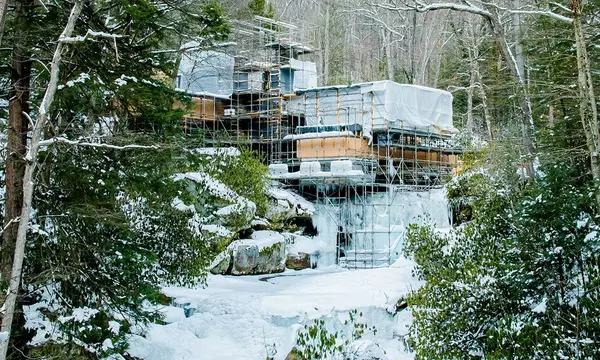Why Landslides Are Ripping Houses Apart in Southern California—and How To Protect Your Own Home

Getty
California declared a state of emergency in the coastal city of Rancho Palos Verdes on Tuesday, in the wake of severe landslides that brought destruction to multimillion-dollar homes.
Located about 30 miles southwest of downtown Los Angeles, Rancho Palos Verdes sits on a hilly peninsula that juts out into the Pacific. The ground there normally shifts about 1 inch per year, but recent heavy rains have dramatically increased the movement, with some places now sliding up to 4 feet per month, officials say.
For some homeowners in the city, where the median list price is about $2 million, the landslides have brought ruin, ripping homes apart at their foundations and splintering them beyond repair.
As water from the heavy rains seeped into a sandy layer beneath the surface, it created something like a lubricated face, allowing the tons of material on top to succumb to the force of gravity and slide downhill, says Benjamin Byers, a vice president at California-based geotechnical firm Soil Engineering Construction.
“The super rainy winters are definitely one of the big reasons for all this,” Byers tells Realtor.com®. “They saturated the land, and it takes a lot of hits to get everything moving in the right way. Think about a key in a lock—every pin has to be hit right. So that’s what we’re seeing now.”
Why California landslides are happening now
California receives about 75% of its total precipitation from November through March, with 50% arriving from December to February alone, according to the state’s Environmental Protection Agency.
After several years of serious drought in California, the past two winters have brought prolific rains to the state. The most recent two “water years,” which run from Oct. 1 through the following September, have been the wettest back-to-back seasons in Los Angeles since 1888–90, according to National Weather Service data.
Since October 2022, downtown L.A. has received 53.22 inches of rain, just shy of the two-year record of 54.1 inches set in the late 1880s. The current water year will conclude at the end of this month.
This past February alone was one of the city’s wettest on record, with more than 12 inches of rain for the month—more than the city sees annually in some years.
“It takes time for it to permeate all the way through,” says Byers of the delayed effect of heavy rains on landslides.

Getty
How to protect your home from landslides
For homeowners and prospective homebuyers, the first step in assessing a property's landslide risk is determining whether it's located in an area where the geology and geography could be prone to such disasters.
In California, the state Geological Survey publishes a map documenting areas of known prior landslides, as well as areas at risk. The U.S. Geological Survey has a similar national inventory of known and suspected landslides.
Homeowners who live on slopes should learn how to identify the early signs of deep-seated landslides. They include new cracks in the soil, structural shifts in the home that make doors or windows close improperly, tilting trees, and the sudden appearance of holes or bare spots on the ground.
There are steps homeowners can take to protect their home, depending on how deep the landslide runs beneath the surface, Byers says.
"If it's a 50-foot-deep landslide, there's nothing you can do," he says. "But from zero to 20 feet, you can solve it at a reasonable cost point. Anything beyond that, and you need government funding."

Getty
Simple preventive measures include planting and preserving trees on the property, which can help bind the soil with their roots. More advanced solutions, which usually require professional help, involve retaining walls, systems to control runoff, or other structural supports to shore up the ground.
"You can protect area that hasn't been lost yet with certain elements that engineers use," says Byers. "So you want to find a geotechnical engineer, and there are many of us out there."
In Rancho Palos Verdes, some homes have been effectively demolished by the landslides, leaving owners with the tough decision of whether to rebuild. Others, whose homes are still standing but under threat, will have to decide whether to remain.
The severity of the latest landslides has even led some to question whether the area should be abandoned entirely. But Byers, who has reviewed the soil profile in the area, says the landslides there appear shallow enough to effectively remediate for homeowners who wish to stay put.
"The bummer about that type of work is that you don't get new granite countertops or anything," he says. "But it does preserve your property values."
Categories
Recent Posts











676 N Michigan Ave. Ste 3010, Chicago, IL, 60611, United States